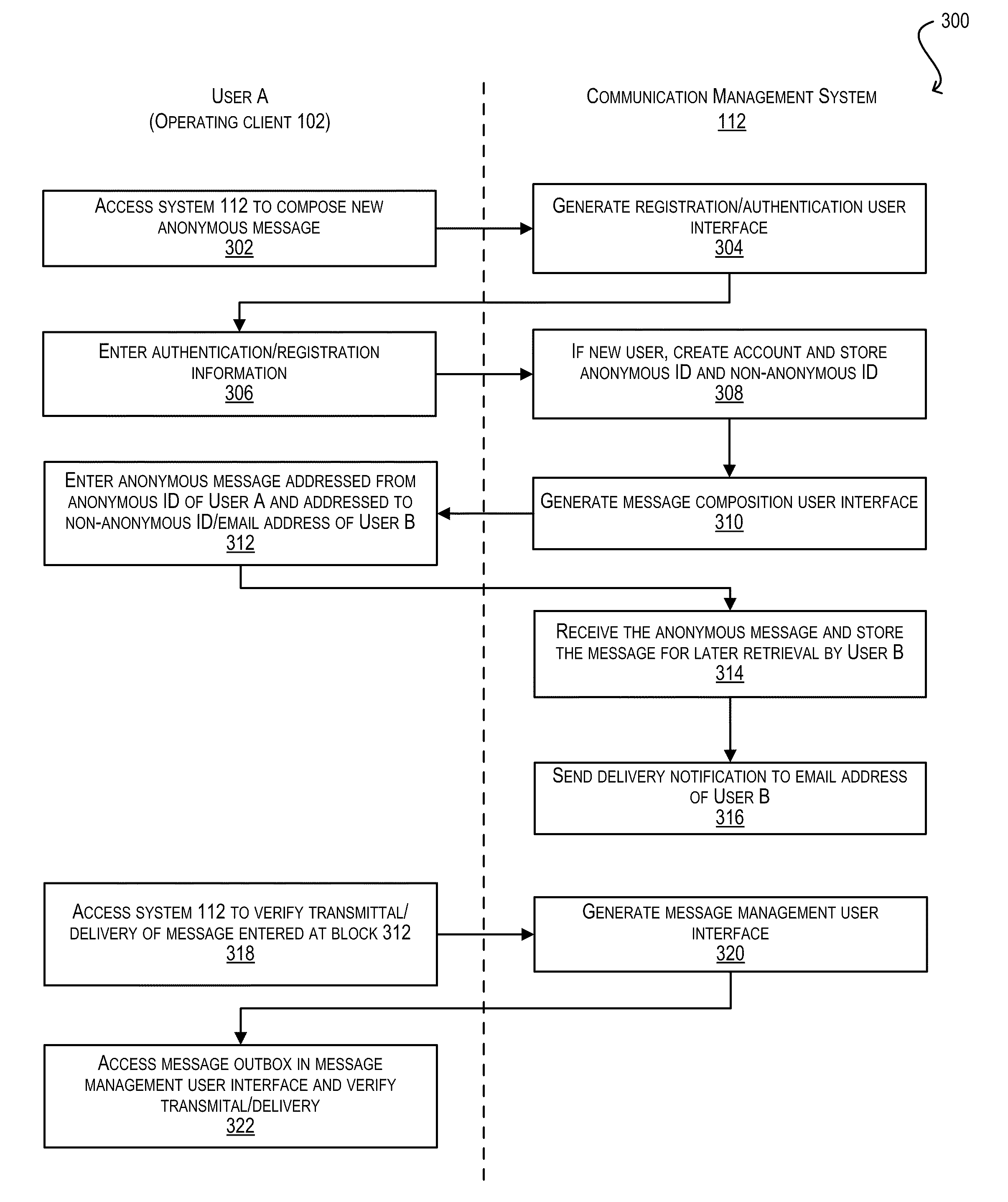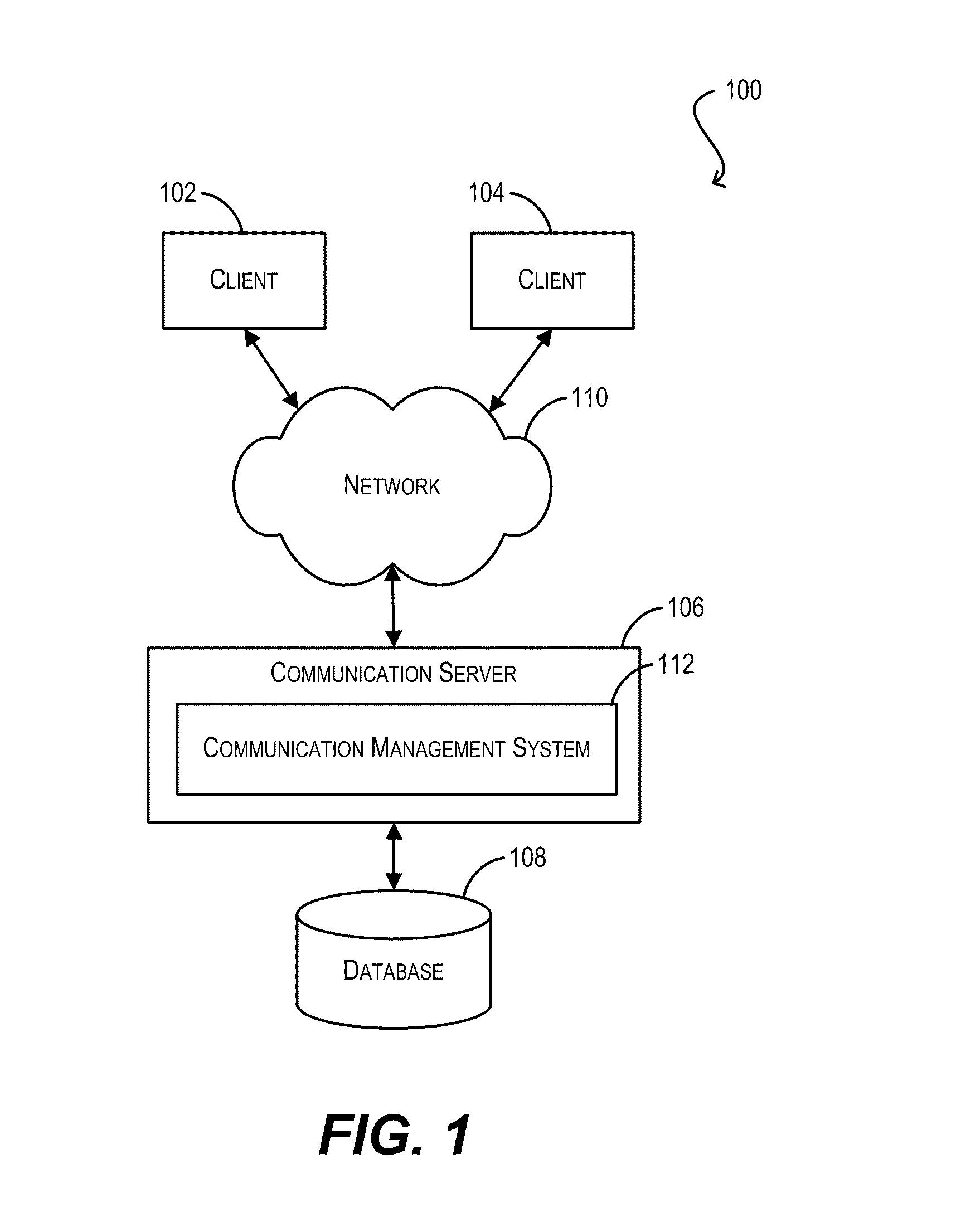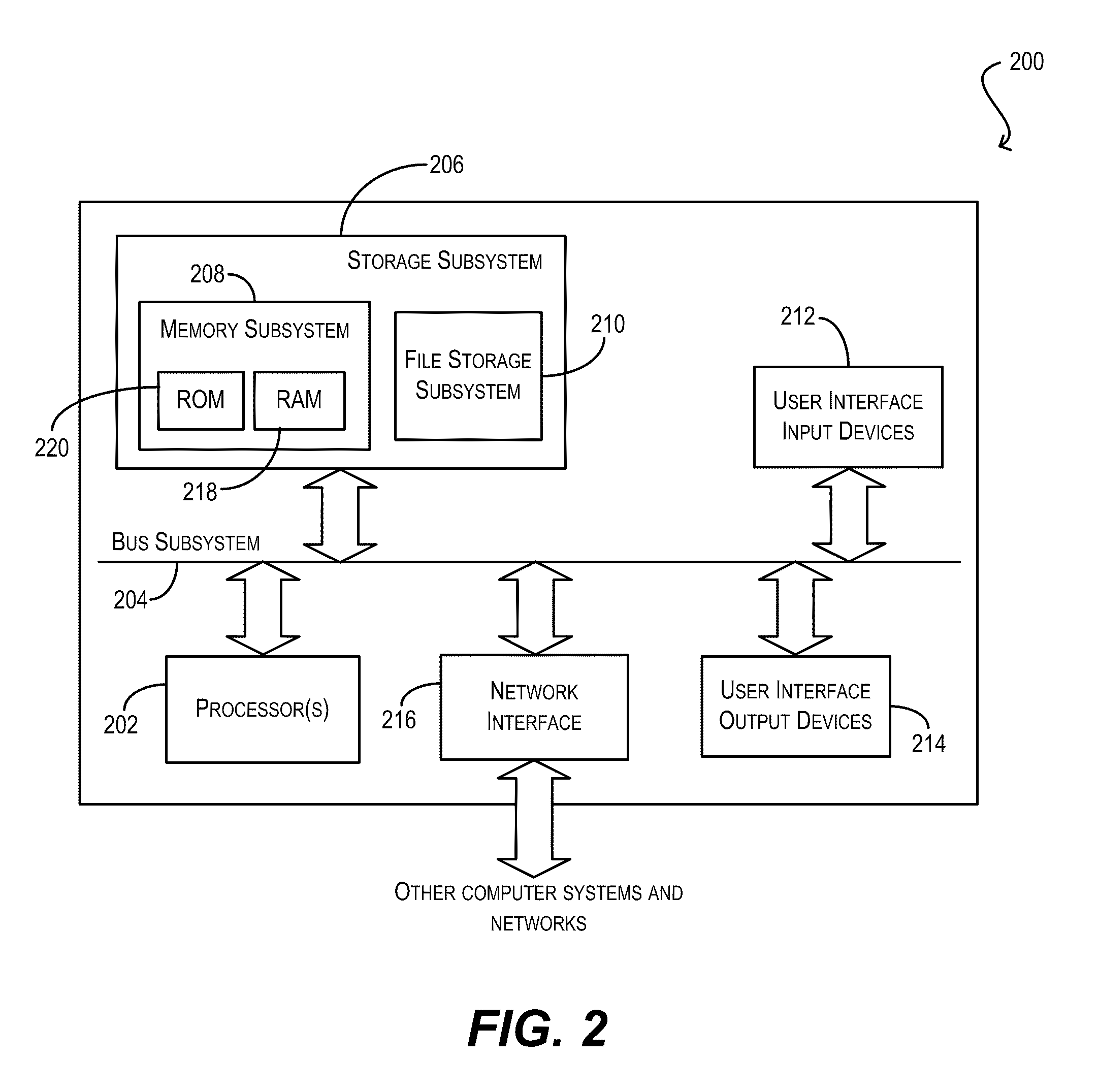Techniques for enabling anonymous interactive communication
a technology of interactive communication and communication, applied in the field of electronic communication, can solve the problems of not being able to allow the recipient to send a reply email to the sender, not being able to allow the survey administrator to reply to any of the survey participants, and not being able to openly share information
- Summary
- Abstract
- Description
- Claims
- Application Information
AI Technical Summary
Benefits of technology
Problems solved by technology
Method used
Image
Examples
Embodiment Construction
[0041]In the following description, for the purposes of explanation, numerous details are set forth in order to provide an understanding of embodiments of the present invention. It will be apparent, however, to one of ordinary skill in the art that certain embodiments can be practiced without some of these details.
[0042]Embodiments of the present invention provide techniques for enabling interactive (e.g., two-way) electronic communication between parties where one party remains anonymous. In one set of embodiments, a system is provided that can store anonymous and non-anonymous identifiers for a group of users. The system can receive a message from a first user, where the message is addressed from the anonymous identifier of the first user and addressed to the non-anonymous identifier of a second user. The system can then deliver the message to the second user. In various embodiments, the delivered message does not include the non-anonymous identifier of the first user or any other...
PUM
 Login to View More
Login to View More Abstract
Description
Claims
Application Information
 Login to View More
Login to View More - R&D
- Intellectual Property
- Life Sciences
- Materials
- Tech Scout
- Unparalleled Data Quality
- Higher Quality Content
- 60% Fewer Hallucinations
Browse by: Latest US Patents, China's latest patents, Technical Efficacy Thesaurus, Application Domain, Technology Topic, Popular Technical Reports.
© 2025 PatSnap. All rights reserved.Legal|Privacy policy|Modern Slavery Act Transparency Statement|Sitemap|About US| Contact US: help@patsnap.com



